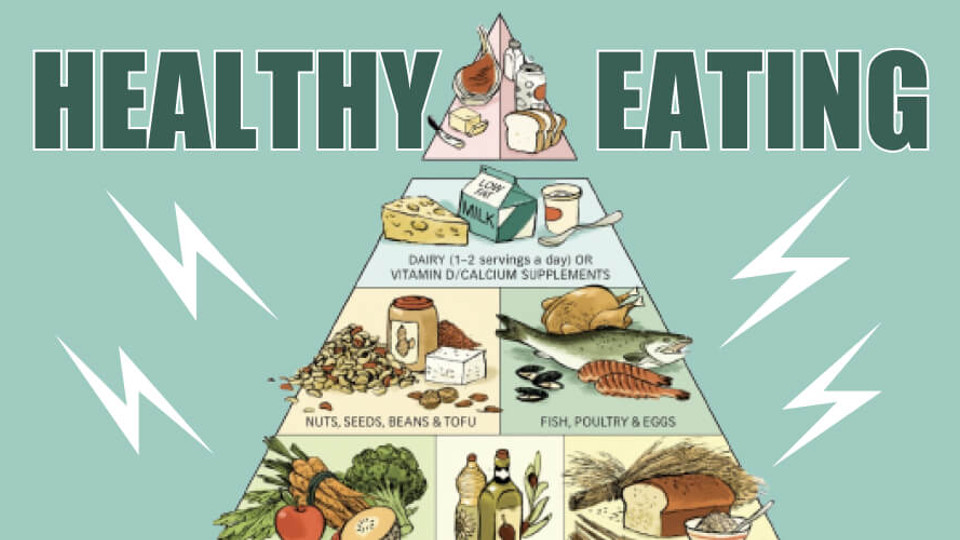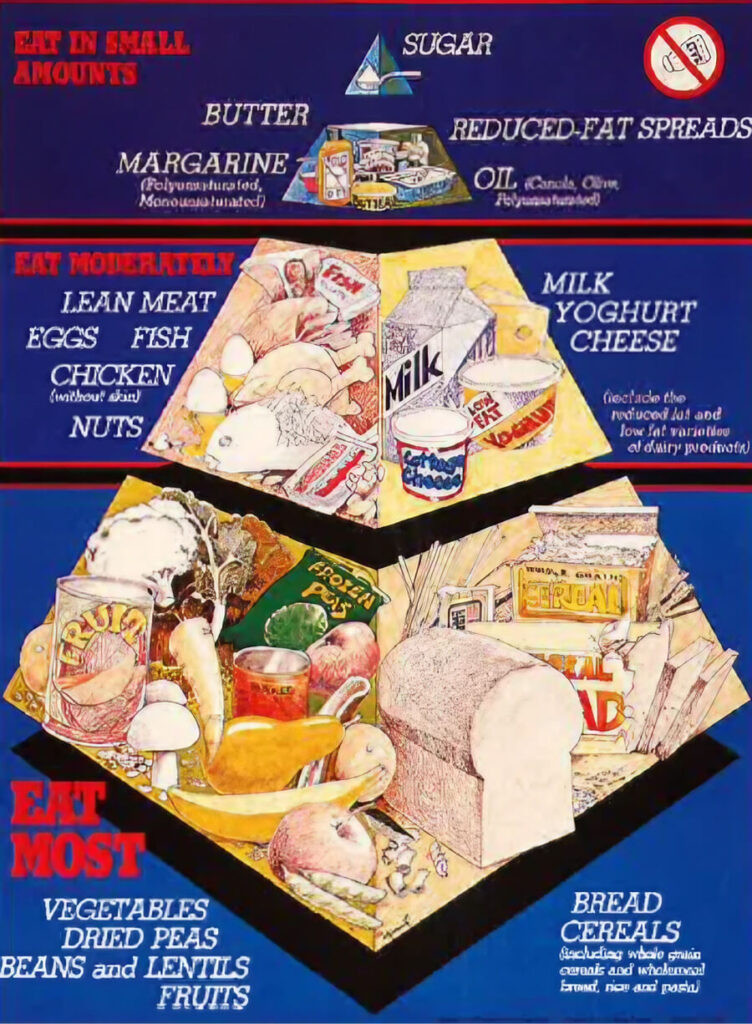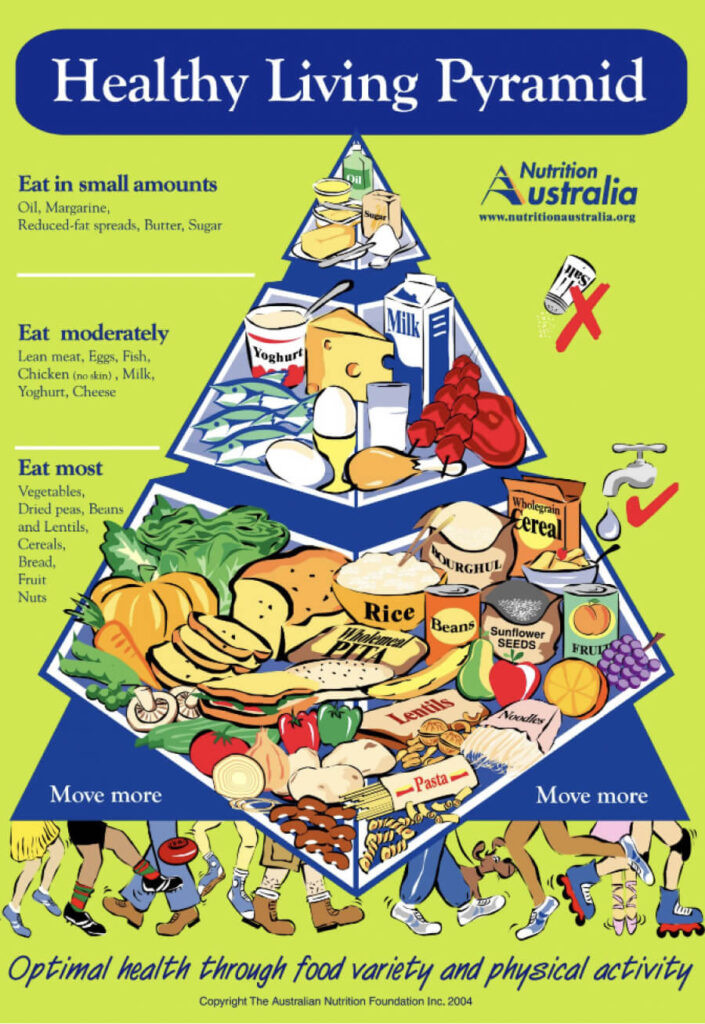
If you’re tired of trying to decipher the latest diet trends and figure out what truly constitutes a healthy diet, you’re not alone. It seems the guidelines for health are forever changing. For years, the Healthy Eating Pyramid has been touted as the go-to guide for making nutritious and healthy food choices.
But with the rapid advancement of nutrition research and changing dietary needs, we’re asking the big question: is this pyramid still relevant in today’s world? In this blog, we’ll dive into the history of the Healthy Eating Pyramid, consider its criticisms, and compare it to alternative modern approaches to healthy eating. So grab a snack, sit back, and let’s get to it.
What is the Healthy Eating Pyramid?

The history of the food pyramid is somewhat convoluted and confusing, but it appears the most modern food pyramid made its debut in Sweden in 1974 and then in 1992, when the USDA released its version to help Americans eat a balanced diet. But it wasn’t all smooth sailing for the USDA’s version. The release was delayed by a year due to the food industry’s attempt to influence federal dietary recommendations for their own benefit and concerns over portion sizes, which is problematic in its own right.
The Layers of the Healthy Eating Pyramid
There are several different formations of the Healthy Eating Pyramid – some have 4 layers, some 5 and some even 6. However, when broken down into 3 main layers, this is what the nutritional advice looks like:
The Foundation Layers
In this Harvard guideline, daily exercise and weight management sit at the very bottom of the period. This is a new edition to the 2016 update of the guidelines. Then there’s fruit and veggies, healthy oils and fats (olive oil, avocado), and whole grains like rice, barley, wheat and so on.
The Middle Layer
The middle layers consist of milk, yoghurt, cheese & alternative group (providing calcium & protein) and lean meat, poultry, fish, eggs, nuts, seeds, and legumes group (providing protein & unique nutrients). It also includes foods like plant-based protein (tofu, nuts, seeds etc.)
The Top Layer
The top layer includes foods we should eat sparingly, like red meat, butter, refined grains, sugary sweets and salt.
Food Pyramid Updates
The food pyramid has undergone several updates based on our growing understanding of nutrition and health. For example, take a look at Australia’s food pyramids from 1982, 1986, 1999, and 2004, 2007 and 2015 and you’ll see how they’ve evolved over time.






What Changed in the Australian Healthy Eating Pyramid?
Nutrition Australia first introduced the Healthy Eating Pyramid in 1980, based on a ‘more to less’ concept developed in Sweden in the 1970s. It was designed as a simple, conceptual model for people to use as an introduction to eating the right foods.
The original Healthy Eating Pyramid separated foods into four layers:
- The larger ‘Eat More’ layer at the base depicted all plant-based foods: fruit, vegetables, legumes, nuts, grains, bread and cereals.
- The ‘Eat Moderately’ layer depicted dairy foods (and dairy alternatives) and meat (and meat alternatives)
- And two separate layers in the ‘Eat in small amounts’ section which depicted added fats and added sugar
Since then, the Pyramid has continued to evolve, always with the same aim: to encourage Australians to eat a varied and balanced diet in line with current dietary guidelines.
Is the Healthy Eating Pyramid Outdated?
Well, technically, the Healthy Eating Pyramid was replaced in the US in 2011 by something called MyPlate. Basically, they flattened the Pyramid and turned it into a plate concept that was supposed to make it easy to see the right balance of healthy foods.

MyPlate, by comparison, was seen as a good move. It offered better information on portion sizes and sent the message that a balanced meal should be at least half vegetables and fruits.
However, there are still crucial details missing, like what type of grain? What sources of proteins? What fats are used to prepare the vegetables and the grains
MyPlate doesn’t distinguish between better options for grains, like whole grains over refined and rapidly digested grains. It also doesn’t give any preference for healthier protein choices like fish and beans over red meat. And, it doesn’t highlight the benefits of eating more unsaturated and omega-3 fats and reducing saturated fats from meat and dairy.
It also doesn’t account for where sugary foods and processed foods sit within a diet, nor does it mention anything about diet and an active lifestyle, which is also crucial to our overall health.
The Harvard Healthy Eating Plate
If you are going to follow the Healthy Eating Plate diagram, check out the Harvard version which incorporates a lot of what was missing from the original USDA MyPlate diagram. It has more clear information on the types of veggies, wholegrains, fruits and proteins you should be eating, and also incorporates the importance of drinking water and staying active.

Australia seems to have its own version of this too: The Australian guide to healthy eating – a food selection guide which visually represents the proportion of the five food groups recommended for consumption each day. This version includes things like processed, sugary foods in a corner in the bottom labelled under “sometimes” foods.

Alternative Approaches to Healthy Eating
Healthy eating means different things to different people, but overall, the Healthy Plate diagram is a good start for most people.
In terms of alternatives to the Healthy Plate/Pyramid, one of the most popular alternative approaches is the Mediterranean Diet. The Mediterranean diet is a way of eating that’s inspired by the traditional eating habits of people living in countries surrounding the Mediterranean Sea, such as Greece, Italy, and Spain.
This diet emphasises eating whole, minimally processed foods such as fruits, vegetables, whole grains, legumes, nuts, seeds, and olive oil. It also includes moderate amounts of fish, dairy products, and wine, and small amounts of red meat.
It basically follows the same guidelines as the Healthy Eating Pyramid and MyPlate. So, what we can gather is that it doesn’t matter whether you prefer MyPlate, the Healthy Eating Pyramid, or something else – there are fundamentally agreed-upon practices for healthy eating. These are:
- Focus on fresh produce, lean proteins, whole grains, dairy, and healthy fats.
- Eat from all food groups to ensure a balanced diet.
- Exercise.
- Drink water.
- Limit sugar, salt and processed foods.
It’s also important to remember that these are goals you should be striving towards, and small steps towards improvement are better than none.
Tell Us Your Thoughts
What do you think? Do you think MyPlate/The Healthy Eating Pyramid is outdated? How should we be eating? Is there a one-size-fits-most approach? We especially would love to hear from nutritionists and dietitians, so drop us a comment with your thoughts below.


